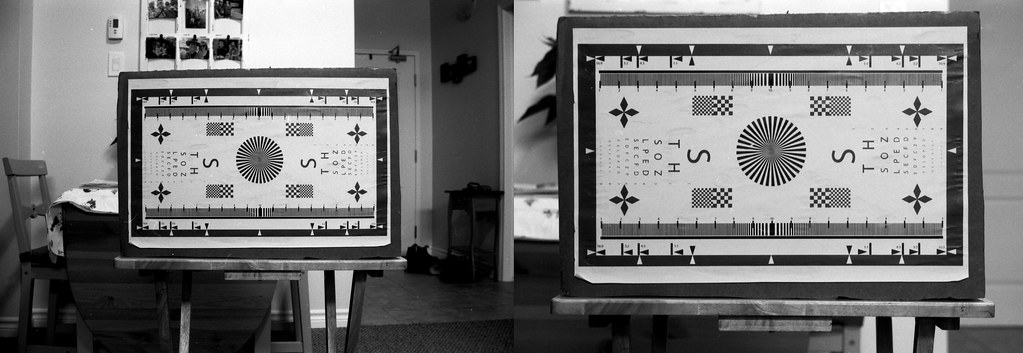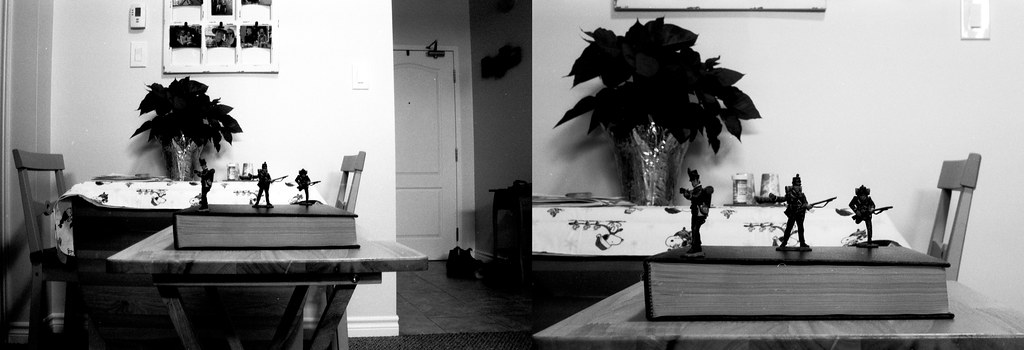Minolta certainly got right if there is one thing the number of sleeper lenses in their initial autofocus offerings. Mostly among these sleeper lenses are the zoom lenses, and one of the best is the 35-70mm f/4. Without breaking the bank, a lens with little fanfare or flare can certainly deliver quality images. This lens was my first experience with Maxxum glass, first on a Maxxum 5000 and then again on the 7000. And while this lens looks proper on those two cameras, it is dwarfed on the Maxxum 9, but it doesn’t matter as the image quality is superb.

Lens Specifications
Make: Minolta
Model: Maxxum AF 35-70mm 1:4 MACRO
Focal Length: 35 ~ 70mm
Focal Range: ∞ – 0.9 m (0.3 m with Macro)
Aperture: f/4 – f/22, 7 Blades
Structure: 6 Elements in 6 Groups

Minolta Maxxum 9 – Minolta Maxxum AF 35-70mm 1:4 MACRO – Ilford Delta 100 @ ASA-100 – Ilford ID-11 (Stock) 8:30 @ 20C
Build Quality
The first thing you will notice with this lens is how small it is; at a glance, you would think that it’s a prime lens. And actually the first time I brought it out with the Maxxum 9 to a TFS meetup in Collingwood, most people thought it was the 50mm f/1.7! The external casing of the lens is made from plastic, with the internals being metal. Most importantly, the lens mount is metal as that takes the most strain. The front elements do telescope out as the lens is zoomed in, meaning that despite the compact nature of the lens, it only has that look at the 35mm mark. Like any Maxxum lens, it is designed solely as an autofocus lens, but there is a focusing ring. The problem is that ring is thin and a little hard to use when wearing gloves. The focusing scan is clean and visible under a plastic window. There is a toggle switch to activate the macro function, but you are limited to manual focus at that point. For zoom, the ring is big and has a nice rubber texture to it and zooming end-to-end is smooth and fast. The autofocus depends on the camera; using the original Maxxum cameras (7000, 5000, and 9000), it is a little slow, but once you get into the xi series and the single-digit offerings, it is fairly quick for a lens of its age.

Minolta Maxxum 9 – Minolta Maxxum AF 35-70mm 1:4 MACRO – Ilford Delta 100 @ ASA-100 – Ilford ID-11 (Stock) 8:30 @ 20C
Minolta Maxxum 9 – Minolta Maxxum AF 35-70mm 1:4 MACRO – Ilford Delta 100 @ ASA-100 – Ilford ID-11 (Stock) 8:30 @ 20C
Minolta Maxxum 9 – Minolta Maxxum AF 35-70mm 1:4 MACRO – Ilford Delta 100 @ ASA-100 – Ilford ID-11 (Stock) 8:30 @ 20C
Minolta Maxxum 9 – Minolta Maxxum AF 35-70mm 1:4 MACRO – Ilford Delta 100 @ ASA-100 – Ilford ID-11 (Stock) 8:30 @ 20C
Image Quality
The 35-70/4 hits a solid middle ground like any good ‘kit’ lens when it comes to image quality. Optically the lens produces excellent images that are sharp at any focal length and aperture. Distortion-wise, there is a touch at the 35mm mark, but it only shows up when you’re focusing closely, including when you have the lens in MACRO mode. When you start zooming in, the distortion is gone. Similarly, at the 35mm mark and shooting wide open at f/4, there is a touch of vignetting at the corners but no fall-off. Again, once you start to stop down and even at f/5.6, that vignetting is gone. When working with the MACRO function, you can dial things in nice and close to get a near 1:1 magnification factor; of course, you are working with a system almost entirely geared towards autofocus and that MACRO function is completely manual focus. Either way, outside of a dedicated macro lens, like the 100/2.8. The 35-70/4 will work in a pinch. When it comes to the out-of-focus elements, again, the lens hits a solid middle ground, being nothing special or unique about the rendering but producing a smooth result that doesn’t distract from the main subject. And despite being only f/4, at 70mm, you can achieve excellent subject separation from the background. While you can get a simple clip-on lens hood for the lens, I don’t find it needed as the lens doesn’t tend to flare; it’s nice as an extra layer of protection, but it is not firmly connected to the lens. It is something extra to lose.





Applications
The 35-70/4 is classified as a kit lens, it came standard with almost all Maxxum cameras, and if you’re purchasing either a 7000 or a 5000, there’s a strong chance that if it comes with a lens, this is that lens. But don’t turn your nose up and immediately replace it because it will be the perfect starter lens for any Maxxum system, especially the earlier ones that it fits on perfectly. And despite having an improved lens and plenty of primes to choose from when I need a compact option, the 35-70 is the lens that I throw on even my Maxxum 9. Great for an everyday carry around lens and a quick option when travelling, and space is at a premium. It won’t add too much extra to your camera bag, even on the largest camera. In comparison, you are limited at the wide side of things to 35mm, limiting some people. I find that even at 35mm, I can often take two steps back and wait for the aha. And you also have the bonus of almost no distortion. The 70mm end gives you a decent reach and a perfect portrait lens when capturing people or a person, and having that constant f/4 aperture allows for excellent subject/background separation. But that f/4 aperture is also a downfall. This is not the best lens for low-light conditions unless you can use a flash; it also makes even the brightest viewfinders a bit dim. And while it does have a macro function, you are stuck with manual focus to adjust your focus, and it doesn’t work as well as you would think. So it is probably best to ignore that feature on the lens. Thankfully having a toggle switch means the camera’s AF won’t always be hunting for that focus point. And while the lens does have the capabilities for mounting and use on a digital camera, I would not recommend it, especially on a crop-sensor body; you could get away with working with a full-frame a99.





The Low Down
While not the lens for everyone, it is one that I certainly won’t be giving up or getting rid of any time soon. And the best part is that there is a strong chance that you will get one with any Maxxum camera you purchase; think of it as a handy body cap for your Maxxum. And probably the best part is that if your copy breaks, replacing it is not an expensive endeavour as the lens has not held in great value. You can pick one up on the secondary market with either with a Maxxum camera, especially a 5000 for under 100$. The lens on its runs between 20-35$ depending on age and condition. You might even find a copy with the early crossed-x Maxxum logo. The weird thing is that the lens hood on its own often costs as much as the lens, but frankly, I don’t think it’s a needed accessory. If you’re starting in the A-Mount system, then certainly give the 35-70/4 a short as a starting lens, you may find you like the system and move on to bigger and better lenses and cameras, but you probably won’t give up on this first kit lens.
Further Reading
Don’t just take my view on the Maxxum 35-70/4, check out these other reviews.
Kurt Munger – Minolta AF 35-70mm F/4 review
Photo Jottings – Minolta AF 35-70mm F/4 Review
Imaging Pixel – Analog Diary, A Mixed Bag of Images (Minolta 35-70/4 Review)
Mr. Baz Reviews – Minolta AF 35-70mm F4: Review & Test
I’ve been using this lens with my 7000i on camera walks etc.
Unless I’m specifically looking at taking shots in low light, it’s my go to outdoor lens as it works really well and the image quality is superb. Very happy indeed.